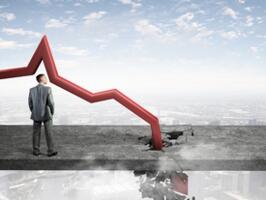The Terrified American Shopper
A Commentary By Froma Harrop
Americans who shopped till they dropped have stopped. Per capita consumption is down for two straight years, according to Booz & Company's new study of U.S. spending behavior. That hasn't happened since the Great Depression.
The consulting firm asks the big question: Has this recession changed American spending habits in lasting ways? And it answers: Looks that way.
Discretionary spending has fallen in every income group, and the lower the income, the deeper the plunge. More disturbing, though, is a growing pessimism. Only 31 percent of those surveyed said that their household's financial status would improve over the next year, while 32 percent thought it would get worse.
Clearly, it's not morning in America, but light does glimmer on the horizon. The economy will improve, right? Perhaps, but house prices are still seeking the bottom and, when they find it, won't fizz in a way that makes Americans feel rich and fancy-free at the malls.
The real-estate romp, combined with easy credit, had masked long-running trends that have dampened the economic prospects of ordinary Americans. The U.S. job machine has been gearing down for decades. During the '60s and '70s, private-sector employment grew 3.5 percent a year, according to The Economic Cycle Research Institute. By the '00s, it was falling 0.9 percent a year.
Several reasons: The decline of unions has let companies hire more temps and part-timers. Jobs continue to leave for lower-wage countries. Automation still supplants people with machines. America's immigration policies persist in displacing less-educated workers. And today's Wall Street demands instant profits, which labor costs eat into.
Young and clever college grads will have a good shot at decent jobs. But what about the middle-aged, the overweight and those with only a high school diploma or less? They have less reason for optimism. Seeing the icebergs ahead, the frightened employed are building economic life rafts by saving more, which means spending less.
As the American economy climbs out of the recessionary pits, the kind of consumer that will emerge with it is becoming evident: not much of one. Only 18 percent of respondents told Booz that they plan to spend on clothing and shoes at pre-recession levels. That leaves over four in five American shoppers saying they won't hit the stores like they used to.
So Americans' normally sunny outlook has fundamentally changed. The magic pills used to dull the pain of global competition are gone. No more housing bubbles to spin illusions of wealth, no more big loans for the little people, no more charge cards to recent bankrupts.
The most obvious mood-enhancer is to improve Americans' sense of security. Like so much else that plagues our economy, this should start with health care. The loss of medical coverage remains the perpetual American nightmare. The unemployed can often replace much of their previous income by cobbling together a couple of part-time jobs. But if they lose health coverage along with the full-time position, they're out in the cold.
How interesting that consumer confidence rose in Canada last month, while it fell sharply in the United States. Canadians know that if a family member falls sick, the family won't lose their house to medical bills. They know that a layoff won't leave them uninsured. That's a huge pillow of security.
The American masses are unlikely to resume their heroic shopping sprees anytime soon (nor would that be desirable). But government policies that ease the terror of personal catastrophe are sure to lift the animal spirits of the American consumer -- and that would help the economy a great deal.
COPYRIGHT 2010 THE PROVIDENCE JOURNAL CO.
DISTRIBUTED BY CREATORS.COM
See Other Political Commentary.
See Other Commentaries by Froma Harrop
Views expressed in this column are those of the author, not those of Rasmussen Reports.
Rasmussen Reports is a media company specializing in the collection, publication and distribution of public opinion information.
We conduct public opinion polls on a variety of topics to inform our audience on events in the news and other topics of interest. To ensure editorial control and independence, we pay for the polls ourselves and generate revenue through the sale of subscriptions, sponsorships, and advertising. Nightly polling on politics, business and lifestyle topics provides the content to update the Rasmussen Reports web site many times each day. If it's in the news, it's in our polls. Additionally, the data drives a daily update newsletter and various media outlets across the country.
Some information, including the Rasmussen Reports daily Presidential Tracking Poll and commentaries are available for free to the general public. Subscriptions are available for $4.95 a month or 34.95 a year that provide subscribers with exclusive access to more than 20 stories per week on upcoming elections, consumer confidence, and issues that affect us all. For those who are really into the numbers, Platinum Members can review demographic crosstabs and a full history of our data.
To learn more about our methodology, click here.


